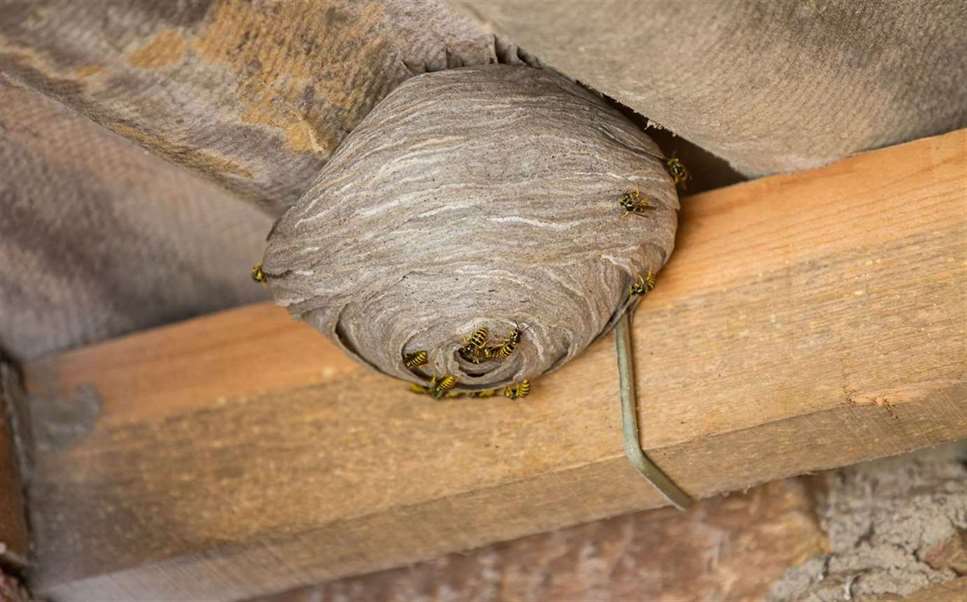
Here is a solid piece of advice from the Winnipeg pest control services of Gilles Lambert Pest Control: Do not disturb a wasp nest! There are several different wasp species. They’re considered to be very beneficial creatures in nature because of their capability of killing other insects which destroy crops. However, wasps do pose an issue for both pets and humans as their potent venom may be life-threatening to anyone who’s allergic to their uncomfortable sting. Like other kinds of creatures in nature, some kinds of wasps are more aggressive than others. Below we list a bit of helpful information to distinguish the difference between them:
Yellow Jackets
These types of wasps have a poor reputation for being aggressive and mean…and for excellent reason…they are!
It doesn’t take a lot to stir up a yellow jacket nest. Yellow jackets usually will nest underground inside an abandoned rodent burrow yet occasionally the queen will start the nest inside a bush, old log, tree, hanging from a soffit, and so on.
Because they’re usually hidden well, it’s easy for pets and humans to happen upon them and all of a sudden be attacked by a multitude of angry wasps. A yellow jacket may be angered by kids who are playing on the lawn a far-away distance from their nest or yard equipment that is being utilized on the opposite part of a lawn.
Once they’re in a frenzy, they’ve been notorious for chasing their intended victim for two miles and deliver as many stings as they possibly can. Unlike honey bees, yellow jackets have the ability to sting over and over without even dying.
Paper Wasps
Paper wasps, like red wasps build intricate, strong nests which are made of chewed wood and saliva. They’re small wasps which are beneficial in that they eat caterpillars and additional plant harming pests.
Therefore, in a limited manner they might be good wasps to have close to a veggie garden. Male wasps don’t have stingers, yet female ones will repeatedly sting if they’re disturbed.
Cicada Killers
They’ll arrive in July and August. Cicada Killers are large yellow and black wasps which may repeatedly sting if they’re provoked. Even though they’re able to fly around and look fairly aggressive they often do not attack.
Cicada killers aren’t social wasps like additional wasp species. These types of wasps make their solitary nest location by burrowing a hole inside the soil.
Wasps of every variety will pose a hazard to the ones who have allergies to their venom. Knocking down a nest and utilizing store bought spray won’t likely reach deep inside the nest in which most wasps exist.
And in the instance of yellow jackets which are underground, store bought spray is useless.
It’s always a better idea to get in touch with a pest control provider in Winnipeg for expert assistance with all sorts of wasp removal.
For more information feel free to get in touch with Gilles Lambert Pest Control at 204-479-6669 right away!
The post Don’t Dare Knock Down a Wasp Nest! appeared first on Gilles Lambert Pest Control.
source https://glpestcontrol.ca/dont-dare-knock-down-a-wasp-nest/

